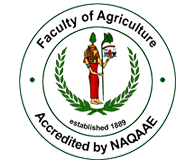Teaching and Learning Strategy
Learning strategies refer to “the behaviors and ideas that the learner engages in during learning, with the aim of influencing the learner’s learning process.” It extends to identifying the various learning strategies that the teacher can use with the learners to achieve his/her goals.
The teaching and learning strategy in the Faculty is based on four main axes, including:
1- Diversity in teaching and learning tools and curricula
2- Availability of teaching tools
3- Capacity building for those implementing the teaching process and learners
4- Continuous follow-up, evaluation and corrective actions
The policies and measures taken in this regard can be reviewed as follows:
First: Diversity in teaching and learning tools and curricula:
The tools that the teacher can use during the teaching process include many alternatives such as lectures, discussions, in-class research, slide shows and the use of computers in research or electronic courses, preparing quarterly papers on the topics of the course, or practical training on the applied concepts in the course through case studies. The instructor is encouraged to choose combinations which support each other according to the nature of the educational situation and the topic of interest. Therefore, the description models for the courses include many of these alternatives, for which the teacher must determine which to choose in the context of implementing the course activities, as well as in the context of evaluating their impact on achieving the educational goals targeted for each educational unit with the course reports to be taken into account in the process of improving the learning process for the next semester course.
Given the nature of the study at the Faculty, practical and applied field training has been given a high relative importance, represented by the use of laboratories, many of which have been furnished with equipment, devices and operating requirements much better than in the past; in addition to the use of experimental farms available to the Faculty in the implementation of regular and summer training programs For students. This extends to using the research facilities available in the Research Laboratories Complex to train students in the event of more advanced devices that are not available in ordinary laboratories. In addition, many cooperation protocols have been signed with agricultural production companies and food processing factories to train students, some of them with foreign countries, especially the European Union and the United States.
Second: Availability of teaching tools
The Faculty has been interested in providing a variety of educational tools. The number of classrooms of various sizes has increased significantly in recent years, as each classroom has the latest display tools such as a computer and a display unit. The quality and maintenance of these devices was ensured through the establishment of a specialized unit for educational aids for "audio-visual aids", which works to provide much better aids in all cases where they are required.
The Faculty encourages - with a number of incentives - the conversion of many courses into electronic courses - through a lab that was set up specifically for this purpose - so that students can refer to it at any time that suits their circumstances. This was followed by providing electronic reading rooms, whether in the library or in the computer unit, which also provides various free and discounted trainings programs for students - and even workers. The Faculty provided an ongoing update and a remarkable abundance of scientific references for all courses through the annual book fairs, and established a rich library of audio-visual media and films in the library. The Faculty provides the opportunity to move to the areas of training through the group of cars and buses that it has provided for this purpose
The Faculty has also connected all departments and faculty members to the Internet within the framework of a special project.
Third: Capacity Support for those Implementing the Education Process and Learners:
The Faculty adopts an ambitious program to train all members of the teaching staff and the supporting staff on the knowledge and skills necessary to develop the teaching process, including English language courses, whether in the laboratory established for this purpose in the Faculty or in cooperation with specialized institutes such as the British Council, as well as the courses scheduled within the framework of the promotion of teaching staff members.
Fourth: Continuous follow-up and evaluation and corrective actions:
The Faculty, through the Quality Unit, is concerned with the continuous follow-up and evaluation of performance in the implementation of the educational process through the periodic evaluation of students' performance in courses at the end of each semester, as well as by focusing on what is required of improvement plans within the framework of reports on courses and programs.
Bottom of Form








